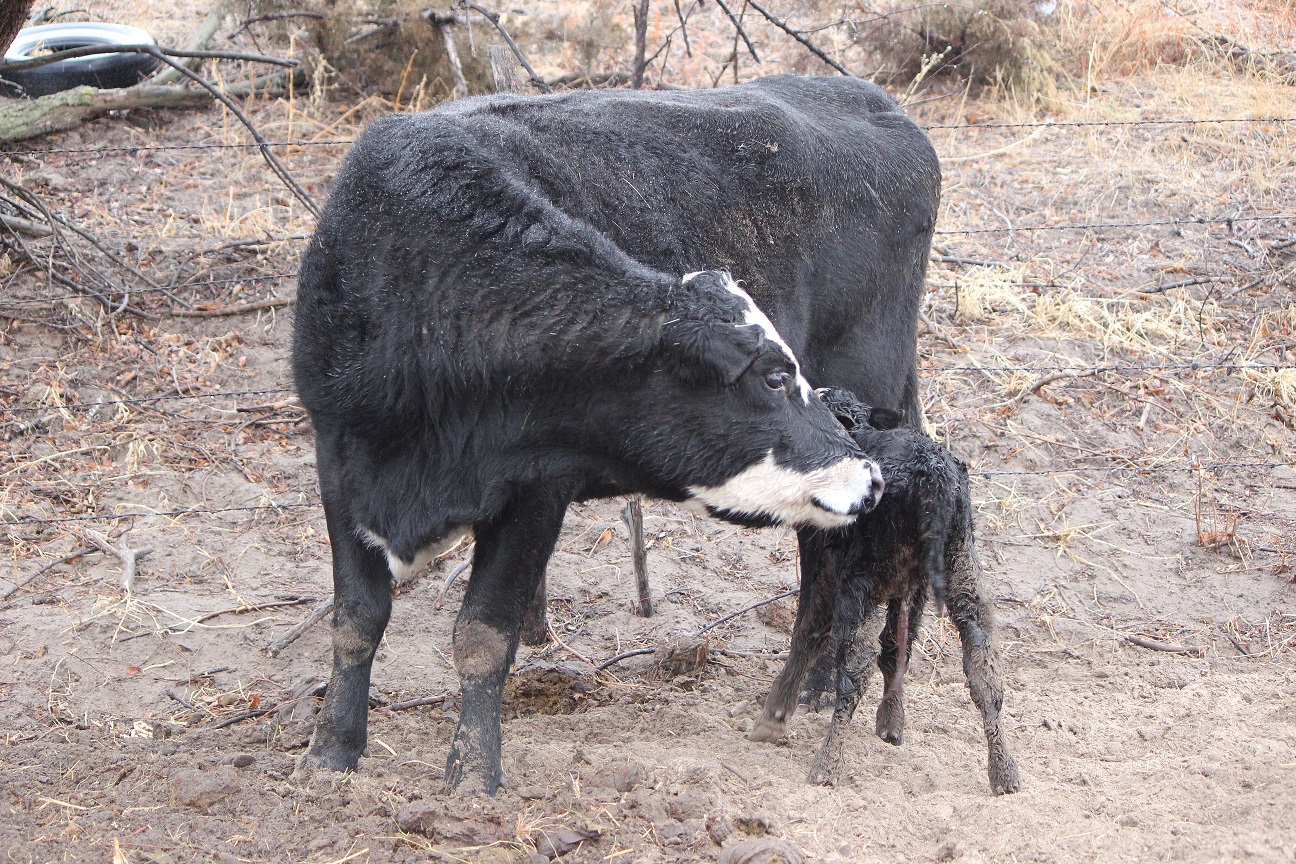
Karla H. Jenkins, UNL Cow/Calf, Range Management Specialist
As spring approaches, so does calving for most beef cattle producers. Spring also begins the most critical part of the journey for the replacement heifer becoming a cow. A spring calving replacement heifer with a target mature weight of 1200 pounds is likely weighing about 950 pounds entering the last trimester of pregnancy and would need to gain about 2.0 pounds per day prior to calving even if she was in a moderate body condition. Producers need to remember, that in the last trimester, at least half of that weight gain will be related to fetal growth and not actually contribute to the growth of the heifer herself. Feeding an ad libitum amount of hay containing 52% TDN and 8% CP along with 3.4 pounds of distillers grains would meet the crude protein needs of this heifer and her rumen undegradable protein needs. However, this diet is still slightly short on the energy this heifer needs. This could be very concerning if the heifer is thinner than desired and weather conditions are particularly harsh. Blending in some higher quality hay or adding other energy feeds could improve the energy balance for this heifer.
Once the heifer calves and lactation starts both her protein and energy needs will increase substantially. The very early spring calving heifer (February or March) is not likely going to have access to any green grass for a couple of months in most of Nebraska and the upper Midwest. If this now lactating heifer were fed the previously mentioned hay and 3.4 pounds of distillers grains she would be well below the energy she requires. This is a critical situation for this cow. This is even more concerning if turn out to green grass is delayed and/or the new mother is thinner than desired.
Sometimes during calving producers will have some green grass starting to become available to the cows. Assuming this now lactating heifer can find enough green grass to make up half of her diet and the producer feeds the hay containing 52% TDN and 8% CP to make up the difference, this heifer is still slightly short on her energy needs. Supplying 2.2 pounds of distillers grains would help ensure this heifers needs were met. Additionally, supplying more nutrient dense supplemental forage would be sufficient. If enough green grass were available that she could consume green growing grass ad libitum she could meet her needs with grass alone.
Shortly after peak lactation, when nutrient needs are the highest, this heifer is asked to rebreed. Therefore, making sure her nutrient needs are being met just prior to calving through breeding is critical for her to remain in the herd. Checking feed resources for nutrient content prior to late gestation will help producers determine what needs to be fed to ensure the nutrient needs of these heifers are met. Assessing body condition score frequently will also allow producers to make necessary changes to the ration in a timely manner. For more information on the nutrient needs of beef cows see NebGuide 2268 Supplementation Needs for Gestating and Lactating Beef Cows and Comparing the Prices of Supplement Sources http://extensionpublications.unl.edu/assets/pdf/g2268.pdf. University of Nebraska extension educators and specialists are available to help with ration balancing.
To listen to BeefWatch podcasts go to: https://itunes.apple.com/us/podcast/unl-beefwatch/id964198047 or paste http://feeds.feedburner.com/unlbeefwatch into your podcast app.